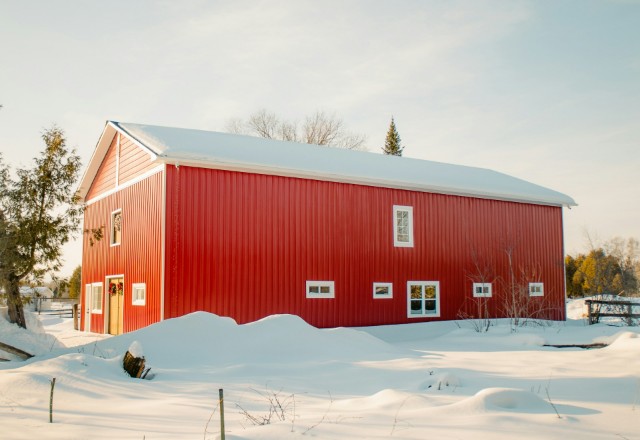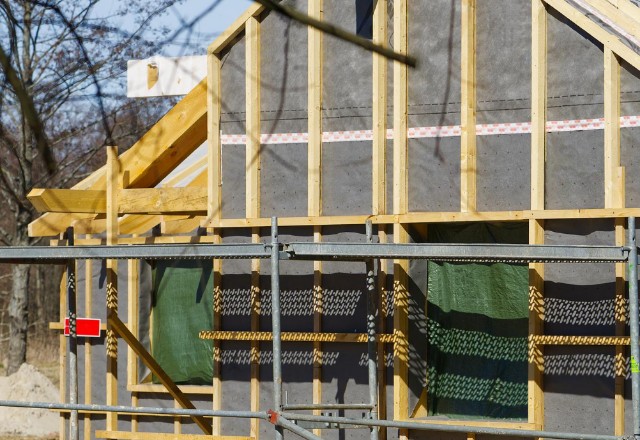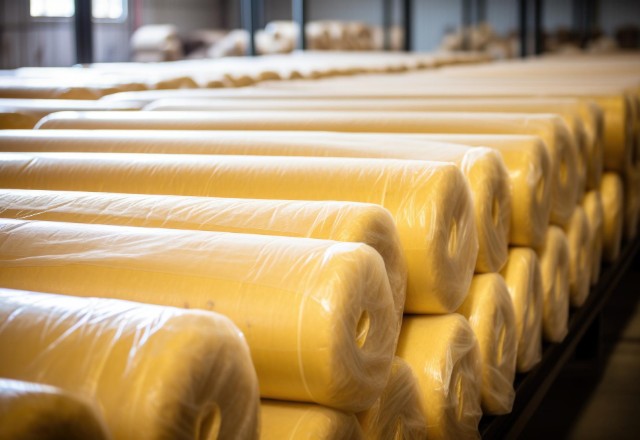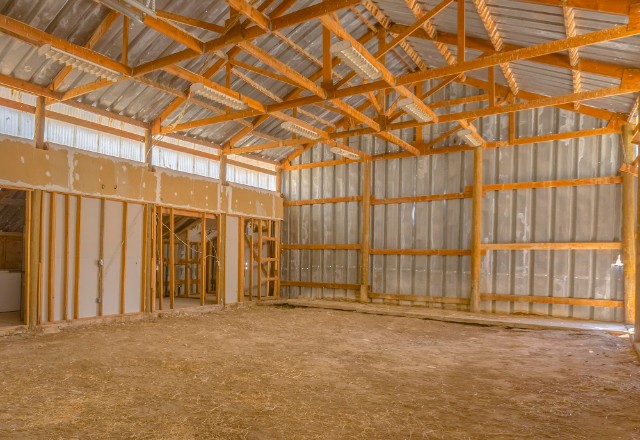Pole barn insulation rolls are the unsung heroes. These versatile insulators not only regulate temperature but also help in noise reduction and moisture control. With a rich historical context dating back to the early days of agriculture, where farmers needed efficient ways to protect their livestock and crops from harsh weather conditions, these insulation rolls have come a long way. Let’s dive into how these simple yet effective solutions can transform your pole barn into a comfortable space for various activities.

Understanding Pole Barn Insulation Rolls
Roll Insulation Types
There are various types available, each with its pros and cons. Fiberglass insulation is cost-effective but may irritate skin upon contact. Reflective foil insulation helps in reducing radiant heat transfer but can be more expensive. Foam board insulation offers high R-values for better thermal resistance.
Selecting the right type of insulation depends on specific needs like budget, installation ease, and desired effectiveness. For example, if you prioritize affordability over everything else, fiberglass might be your best bet.

R-Value Importance
The R-value of an insulation material indicates its effectiveness in preventing heat transfer. Higher R-values mean better thermal resistance against temperature fluctuations inside the pole barn. Consider the recommended R-value based on your region’s climate to ensure optimal energy efficiency and comfort levels within the structure.
For instance, if you live in a colder climate where retaining indoor heat is crucial during winter months, opting for a higher R-value insulation roll would be beneficial.
Benefits of Insulation Rolls
Energy Efficiency
Insulating a pole barn with insulation rolls can significantly reduce heating and cooling costs. By improving energy efficiency, the insulation helps create a more sustainable and eco-friendly building. With proper insulation, the pole barn retains heat in winter and stays cool in summer.
Roll insulation helps maintain consistent temperatures throughout the year inside the pole barn, avoiding extreme fluctuations based on external weather conditions. This consistency ensures a comfortable working environment regardless of outdoor temperatures.
Installing roll insulation also aids in sound deadening within the pole barn. This enhances acoustic comfort by reducing noise transmission. Opting for materials with high sound absorption properties ensures a quieter environment inside the structure.
Pest Protection
Using insulation rolls acts as a barrier against pests like rodents and insects from entering the pole barn. Proper insulation prevents damage caused by unwanted creatures, ensuring a pest-free interior space. Selecting pest-resistant materials for insulation provides long-term protection against infestations.

Choosing the Right Roll Insulation
Factors to Consider
When selecting pole barn insulation rolls, it is crucial to consider various factors. Firstly, the material type plays a significant role in determining the effectiveness of insulation. Different materials like fiberglass, foam board, or reflective foil offer varying levels of durability, moisture resistance, and fire safety. For instance, fiberglass is known for its affordability and ease of installation.
Understanding the concept of R-value is essential when choosing insulation rolls for pole barns. The R-value indicates the insulation material’s thermal resistance; higher values signify better insulating properties. It’s vital to calculate the required R-value based on your region’s climate conditions and how you plan to use the space within your pole barn.
Evaluating cost-effectiveness is key when deciding on pole barn insulation rolls. Considering upfront costs versus long-term savings can help determine which option provides the best value over time. Exploring affordable yet efficient solutions ensures that you strike a balance between initial investment and energy savings in the future.

Installation Guide
DIY Installation
Installing pole barn insulation rolls yourself can be a rewarding project. To start, gather your tools and materials, including the insulation rolls, utility knife, staple gun, and safety gear. Begin by measuring the walls and cutting the insulation to fit using a sharp utility knife. Next, secure the insulation in place with a staple gun along the edges.
For a successful DIY installation of pole barn insulation rolls, make sure to seal any gaps or seams properly to prevent heat loss. By taking on this project independently, you can save money on labor costs while ensuring that the installation is done to your satisfaction.
Tools Needed
Before starting the installation process for pole barn insulation rolls, it’s crucial to have all the necessary tools at hand. Essential tools include a utility knife for cutting the insulation accurately and a staple gun for securing it in place effectively. Safety gear such as gloves and goggles are important for protection during installation.
Creating a checklist of required equipment ensures that you have everything you need before beginning work on insulating your pole barn. Having all the right tools ready will help you complete the project efficiently without interruptions or delays.

Preventing Condensation
Causes of Condensation
Condensation in pole barns is often caused by temperature differentials and humidity, leading to moisture buildup. This can result in various issues such as mold growth, rust, and structural damage. Identifying these common factors is crucial for effective prevention. For instance, when warm air meets a cold surface like an uninsulated metal roof or walls, condensation forms.
Understanding the risks associated with condensation buildup helps in taking proactive measures to combat it. Without proper insulation or ventilation, excess moisture can accumulate on surfaces within the pole barn. This can compromise the integrity of the structure over time due to rotting wood or corrosion of metal components.
Solutions
To prevent or minimize condensation in pole barns, implementing strategies like proper ventilation systems, installing vapor barriers, and using adequate insulation rolls are essential steps. These techniques help regulate indoor humidity levels and maintain a balanced temperature inside the structure. Maintaining optimal moisture control through regular inspections and upkeep ensures a healthier environment within the pole barn.
Cost Considerations
Initial Investment
When considering pole barn insulation rolls, it’s crucial to calculate the upfront costs. This includes the price of purchasing the insulation material and installation expenses. It’s essential to weigh these initial costs against potential long-term savings on energy bills that properly insulated pole barns can provide. Exploring financing options or available incentives for insulation projects can help offset some of the initial investment.
Long-term Value
Investing in pole barn insulation rolls offers significant long-term benefits and return on investment. Properly insulated pole barns can increase property value by improving energy efficiency and comfort levels, making them more attractive to potential buyers in the future. Over time, the money saved on reduced energy bills due to efficient insulation can outweigh the initial investment, providing ongoing cost savings throughout the lifespan of the pole barn.

Maintenance Tips
Regularly checking pole barn insulation rolls is crucial to ensure they are working effectively. Inspecting them frequently helps in identifying any issues promptly. Signs of damage, wear, or moisture intrusion should be addressed as soon as possible.
By conducting routine inspections, you can catch problems early and prevent further damage. For instance, if you notice torn or compressed insulation, it may not be providing adequate thermal protection. Taking proactive measures like replacing damaged sections can help maintain the overall efficiency of the insulation.
Remember that a well-maintained pole barn insulation system can save you money in the long run by ensuring optimal energy efficiency. Regular checks also help extend the lifespan of your insulation and preserve its insulating properties over time.
Summary
You’ve now grasped the ins and outs of pole barn insulation rolls, from their benefits to installation and maintenance. By choosing the right insulation rolls and following the installation guide, you can ensure a well-insulated and cost-effective solution for your pole barn. Remember to prevent condensation and factor in cost considerations for a successful insulation project.
Now that you’re equipped with this knowledge, it’s time to take action. Evaluate your pole barn’s insulation needs, select the appropriate insulation rolls, and kickstart your project. Proper insulation not only enhances energy efficiency but also protects your belongings. Get started today and enjoy a well-insulated pole barn all year round!




 509-201-4190
509-201-4190
